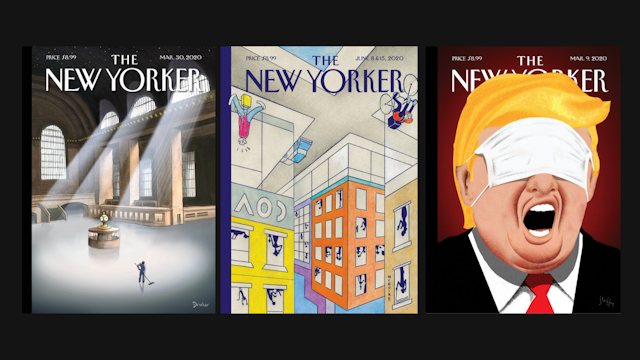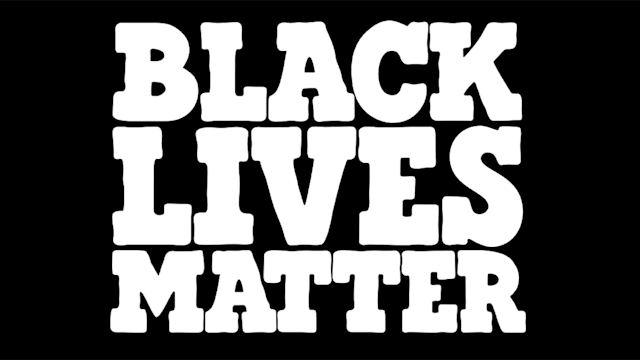2020 round-up – the year in creative: Mouldy Whoppers, #StayAtHome, BLM & Ocean Spray
As we get ready to shake the dust off 2020, The Drum is rounding up some of the key stories, interviews and work that have shaped the year. Today, creative reporter Imogen Watson explores how agencies and brands overcame adversity to deliver monumental work in a year like no other.

Despite the pandemic hindering production, creative in 2020 has been monumental
While it’s hard to imagine 2020 without the coronavirus, there was a brief window at the beginning of the year where the world was quietly anticipating an eventful summer. This window wasn’t without its own trauma, however, as Australia was still aflame and World War III was (literally) trending on Twitter.
As Australia did its best to dampen the flames, brands like Unilever, McDonald’s, and WPP offered their assistance.
Despite the rise of online advertising, the Super Bowl this year was still advertising’s biggest day, with brands pulling out all the stops. From our vantage point now, it’s hard to recollect a 2020 in which Super Bowl gatherings were carefree and sports stadiums were filled with fans.
Brave or an ad industry in-joke? That’s the quandary people were left with when Burger King introduced its infamous ‘Mouldy Whopper’. The ad saw its prized burger decaying over a 34-day period, to highlight the chain’s decision to remove artificial preservatives.
As self-isolation and quarantine becoming the new normal back in March, the pandemic prompted brands and tech players to show the real power of purpose.
With big production postponed for the foreseeable future, brands began shooting from captivity. For better or for worse, the Zoom call ad trope was exhausted by the end of lockdown.
In the midst of national crisis, UK public service broadcasters took the opportunity to remind the general public that their country needs them.

Even though the Covid-19 outbreak caused some physical publications to cease, for others like The New York Times, The New Yorker and Time, the relentless news cycle ushered in an era of creativity for print.
Determined to help stem the spread of coronavirus, the UN put out an open brief to the creative community, encouraging creatives of all countries and languages to develop eye-catching PSA work. The response to the creative call to arms was enormous, with over 17,000 entries from 143 countries flooding in.
While the lockdown was difficult for a multitude of reasons, for victims of domestic abuse it was hell on Earth, with the UN estimating that there would be 15m more cases this year. Domestic abuse charities from Refuge to Women’s Aid turned to advertising in a bid to raise awareness of their services, bringing out all-important creative to help save lives.

With people around the world craving connection in lockdown, dating apps experienced a boost that proved romance wasn’t dead (well, virtually at least) and apps like Hinge and Bumble were quick to jump on the hype.
An Earth Day to remember, 50th-anniversary celebrations were shifted online, forcing people to gather virtually. This didn’t hinder brands, who still celebrated the big birthday.
When some sports were able to resume in May, one aspect was noticeably absent – the roaring crowd. Sports teams had to therefore come up with ingenious ways to fill their stadiums. Sadly, a stunt for FC Seoul backfired when the ‘mannequin’ fans turned out to be sex dolls, meaning the moritified club was inadvertently advertising sex toys (which is illegal in South Korea).
One side effect of everyone staying home was Nintendo’s video game Animal Crossing becoming a digital icon of the coronavirus era. Eager to get in on the action, brands found ways to advertise on the emerging media channel. This was led by Singapore’s Sentosa Island, which created a branded island that gave people in Singapore a virtual place to hang out. Animal rights activists Peta also got on board, storming the game to stage a virtual protest against the way it treated animals.

Following a long, devastating history of Black Americans losing their lives in police custody, the death of George Floyd in Minnesota in June incited a pained response across America, causing a number of brands to show solidarity, including Ben & Jerry's who on the eighth day of the protests, issued a powerful statement calling on Americans to “dismantle white supremacy” and “grapple with the sins of our past”.
As the protests continued across America and the UK, people across the world united on Blackout Tuesday, which will be remembered as a day of tribute, amplification and lifting up of Black voices, where profile icons were changed to a solid black square. While the idea was to pause buying and selling for the day, a number of brands failed to pause their advertising activity, continuing to push brand messages.
On what was supposed to be Glastonbury Festival's 50th birthday, BBC Sounds decided to bring the festival to homes – virtually. To accompany the ‘Glastonbury Experience’ hub, BBC Creative produced a film that nostalgically flicked through footage filmed by festival-goers over the years.
With Pride parades cancelled thanks to the pandemic, a number of LGBT+ titles and sponsors went above and beyond to make up for it.
Aware its famous ‘Finger Lickin’ slogan wasn’t Covid-friendly, KFC made the colossal decision to remove it (temporarily) from its communications.
In perhaps the most random story of the year, Ocean Spray were dealt a stroke of good luck back in October when a TikTok posted by Nathan Apodaca that saw him drinking the juice while skateboarding went viral.

As October heralds the start of Black History Month in the UK, brands celebrated the Black British community in what has been a historic and troubling year.
And as the US prepared itself for November’s momentous presidential elections, brands took it upon themselves to get people to get out and vote.
For most of this chaotic year, brands have grappled with how to approach Christmas in the time of a global pandemic. This year, the million-dollar question wasn't which cuddly mascot John Lewis would deliver, it was – will brands swerve any mention of the pandemic from their Christmas ad spectaculars?
And, unlike Christmases past, brands and agencies made obvious efforts this year to feature much more diverse casts in their ads. However, efforts only scratched the surface of the much bigger issue. Will 2021 be the year that changes, or will brands continue to treat diversity as a tick-box exercise?
Want to keep apace with the best and brightest creative campaigns and minds in 2021? Keep your eyes on The Drum for more insight, interviews and analysis from your marketing peers.

